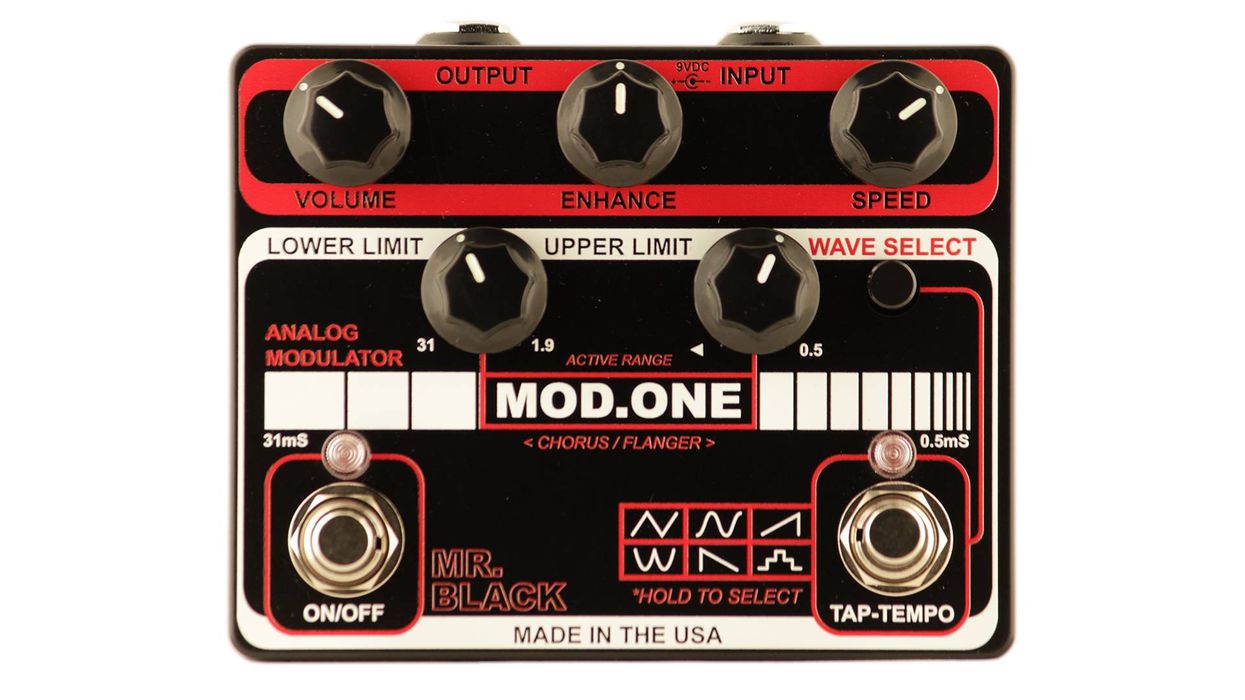PG's Rebecca Dirks caught up with Dream Theater tech Matt "Maddi" Schieferstein to check out the gear John Petrucci used for the band's A Dramatic Tour of Events fall 2011 tour. Watch the video below (and click here to see our John Myung Rig Rundown):
Guitars
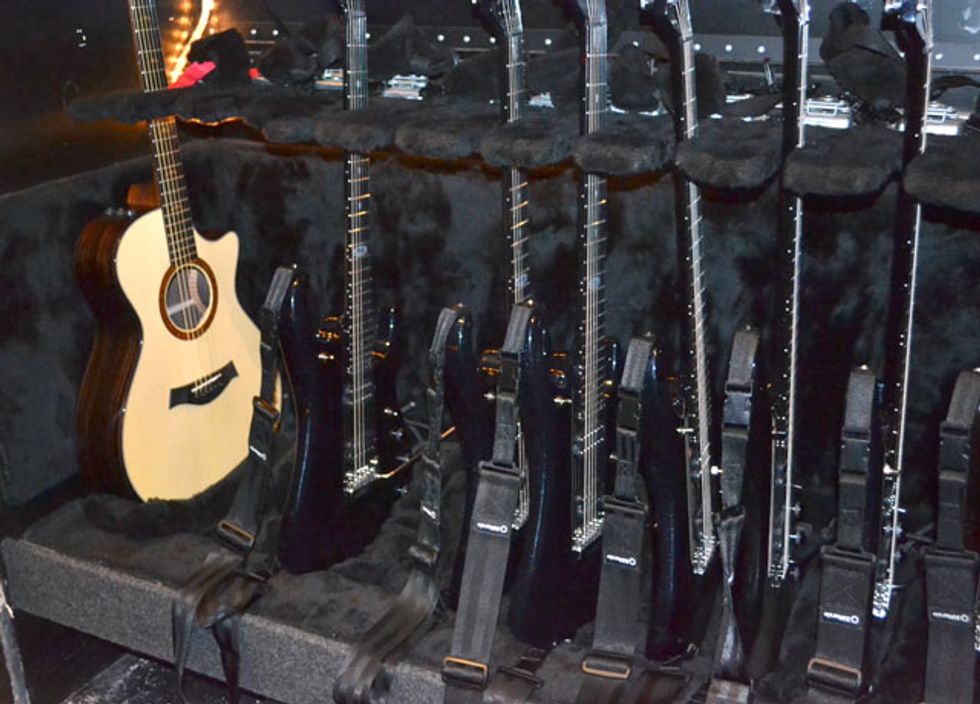
John Petrucci's guitar boat is stocked with Ernie Ball/Music Man JP11 guitars. His main guitar is the last prototype and has DiMarzio Crunch Lab and Liquifier signature pickups with an Ernie Ball piezo system in the bridge. He uses Ernie Ball strings, a custom set of .010-.012-.016-.024-.036-.046. He also carries additional JP11 standard guitars, including a 7-string version. Other guitars used sparingly in the set include an aluminum-top JP that's tuned down to D and Petrucci's 27" scale BFR Baritone with maple top and tobacco finish. The acoustic is a Taylor 30th Anniversary 712ce.
Amps and Effects
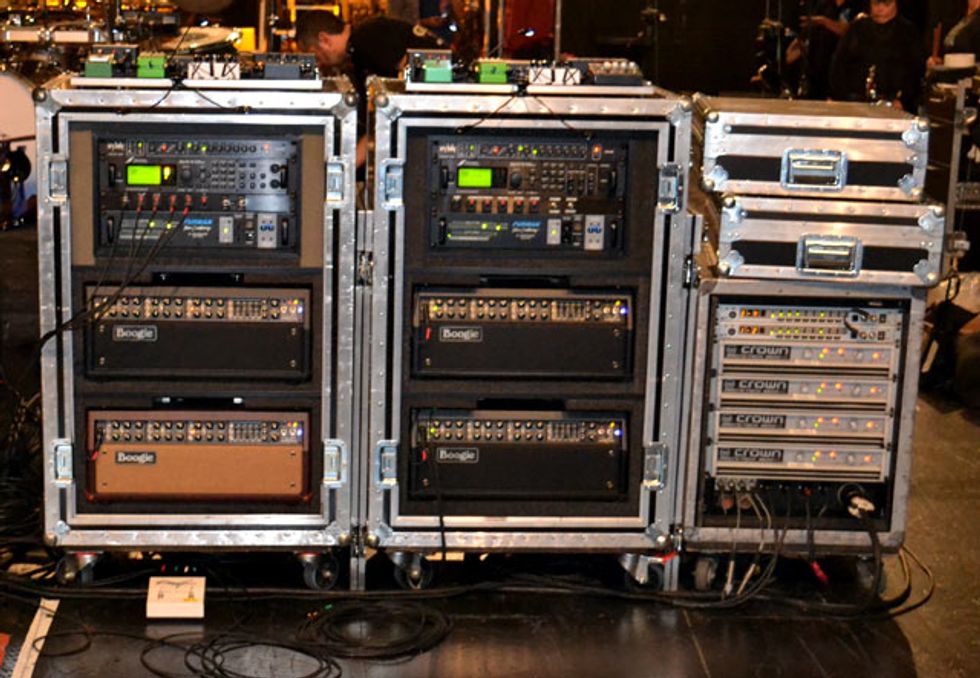
Petrucci travels with two identical racks (the b-rig on the right). The signal goes in through the Framptone A/B box for acoustic or electric. The acoustic goes into a Fishman Aura 16 then straight into a DI. The electric signal goes into a Dunlop Cry Baby wah unit, then to the pedalboard (below), into the switching interface (which switches between top and bottom amps if necessary), into the top Mesa/Boogie Mark V (primarily channel 1 and 3), and a Fractal Audio Axe-FX II in the effects loop of the amp. The signal comes out in stereo. The third rack on the right has four Crown power amps that power ButtKicker drivers in boxes next to his floor controller and in the lower cabinets onstage to provide Petrucci with the feel of the guitar signal when performing.
Petrucci uses a small pedalboard with an overdrive that rotates out constantly. When we caught up with him he was using a Keeley-modified Ibanez TS-9. Mainstays on the board are a Boss PH-3 Phase Shifter, MXR EVH Flanger, and Carl Martin Compressor Limiter. The board is powered by Voodoo Lab Pedal Power 2 Plus and uses an Axcess GRX4 loop system.
Petrucci controls his sound with an Axess Electronics FX-1 with six presets: 1-2 for clean, 3-4 for rhythm, 5-6 for lead. He can access chorus, three delays, and harmonizer from the Axe-FX II and his flanger, phaser, overdrive, and compressor from the satellite pedalboard. The wah pedal controls the Dunlop rackmount Cry Baby, the Ernie Ball volume pedal controls the volume via the Axe-FX II, and he tunes with a Boss TU-2.
Cabinets
Petrucci uses two Mesa/Boogie 4x12 cabinets off-stage mic'ed for the PA each with a Shure SM57 and Shure KSM313s.
Onstage, Petrucci has three stacks that are completely for show. As previously mentioned, the only functionality of these stacks is ButtKickers in the 2x12 cabinets that make the floor shake with the guitar sounds.


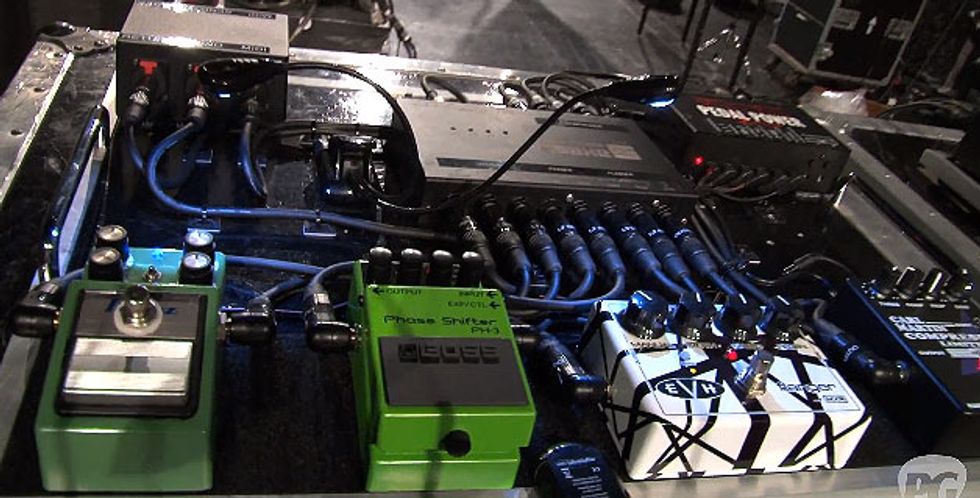
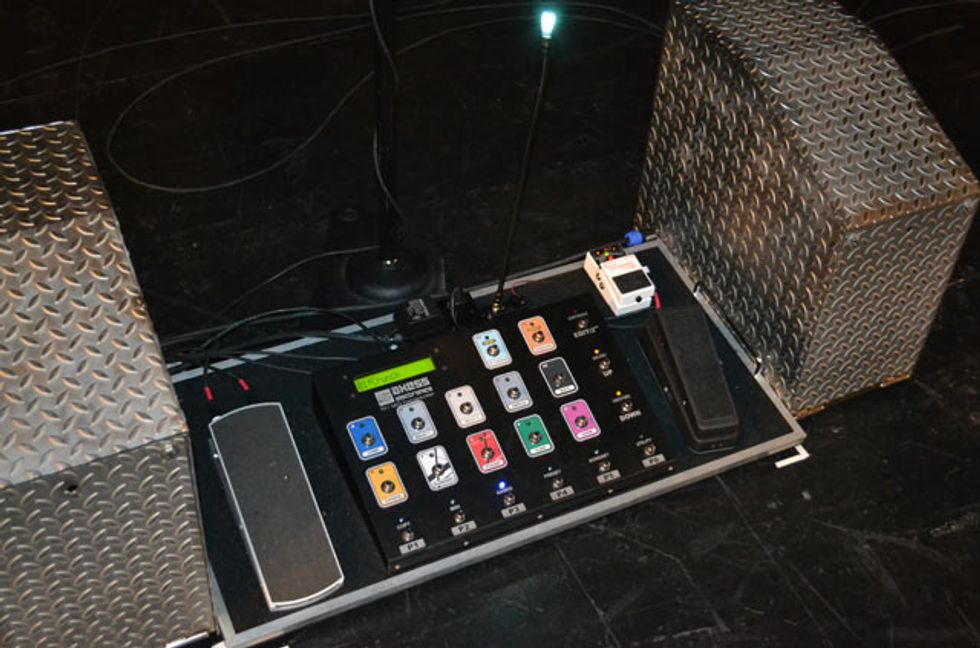
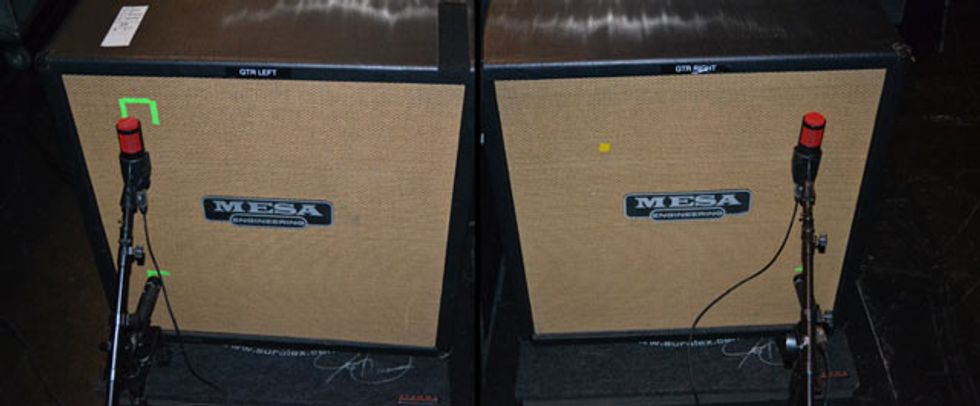
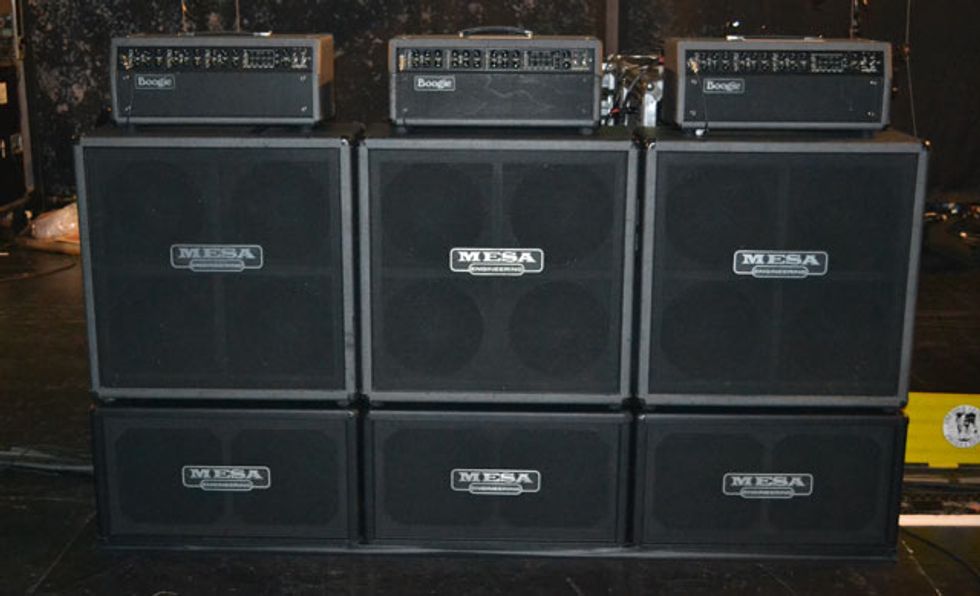




![Rig Rundown: Russian Circles’ Mike Sullivan [2025]](https://www.premierguitar.com/media-library/youtube.jpg?id=62303631&width=1245&height=700&quality=70&coordinates=0%2C0%2C0%2C0)












